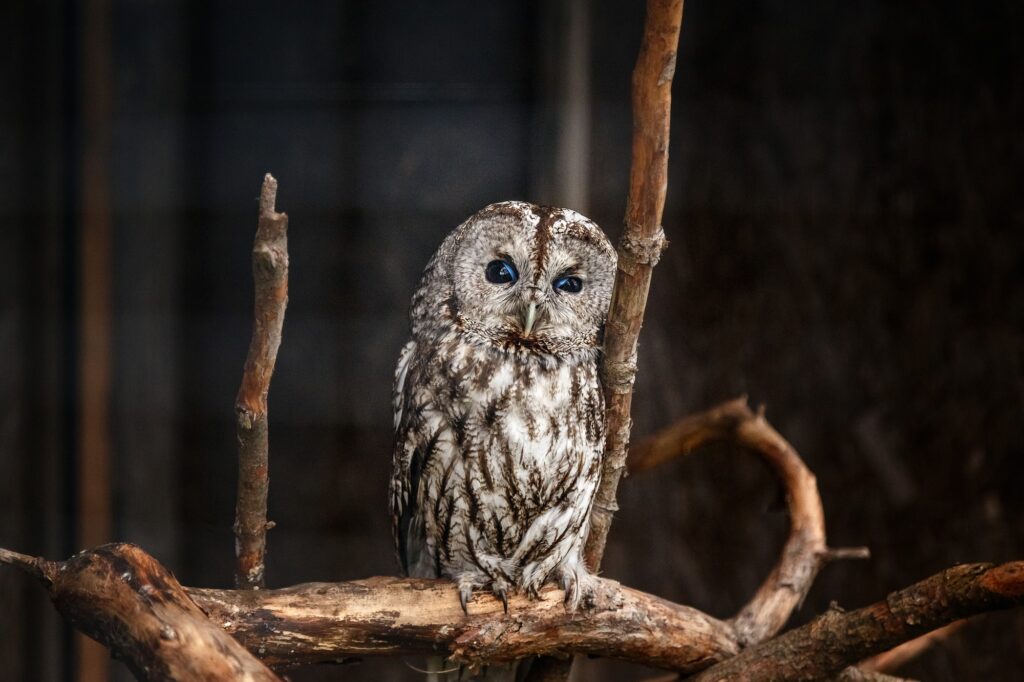Florida is known for its sunshine, beaches, and summer vibes all year long. So, it’s easy for some people to forget the Sunshine State has 1,058,000 acres of forests and woodlands, including a total of 35 forests, 175 state parks, and nine state trails.
With topography like that, it’s no wonder a wide variety of birds, including owls, think it’s a great place to live and breed! Out of the 19 total types in America, there are seven species of owls in Florida, along with 190 other bird species.
Florida’s owls vary in size, behavior, and food preference, so it’s a bit interesting that all of them manage to live and breed under the same roof. In this article, we’ll discuss the seven owls in Florida, their behavior, and how you can find them.
Barn Owl
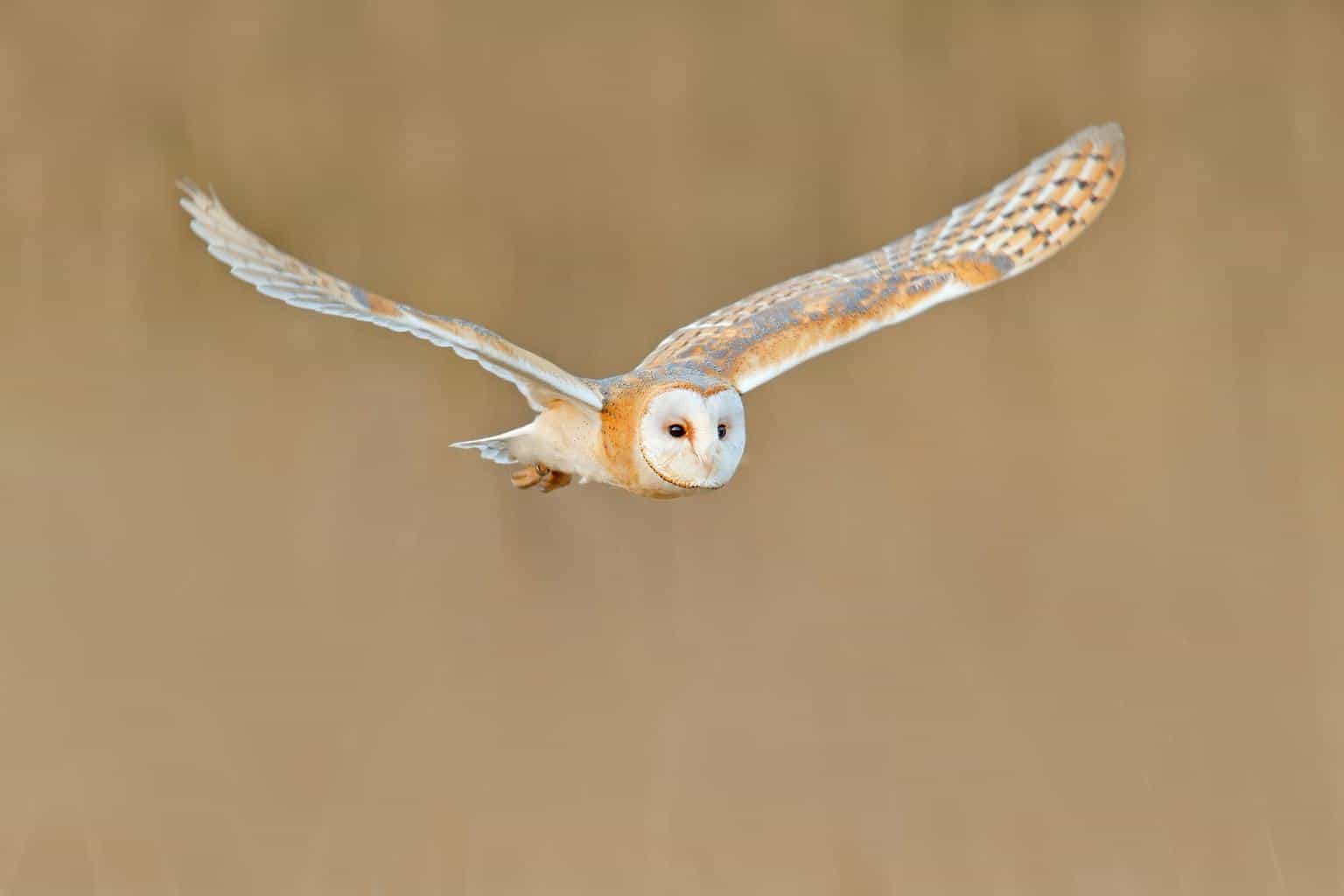
- Scientific Name: Tyto furcata
- Length: 13-15 inches
- Weight: 1-1.3 pounds
- Wingspan: 42-43.3 inches
There are barn owls present in almost all 50 states and the southern portion of North America, so of course, you’ll find them in Florida, too. However, their population is pretty low in the state, so your chances of running into them are slim. A lot of them are also fleeing the state because of habitat loss.
Barn owls are known for looking like ghosts in the night because their bodies are dark but their heart-shaped faces are white. So, they appear like a light hue against the dark night background.
They mostly nest inside tree cavities, abandoned caves, and you may also find them in buildings or empty barns. They prefer staying close to open areas when they build their nests, so that’s where you’re most likely to see them. You may also run across these owls around marshes, fields, and agricultural sites. They’re purely nocturnal, though, so don’t expect to see them in the light.
These owls are known to stay with their mates for several seasons after mating, so there’s a high chance you’ll run into the same pair two years in a row.
Short-Eared Owl
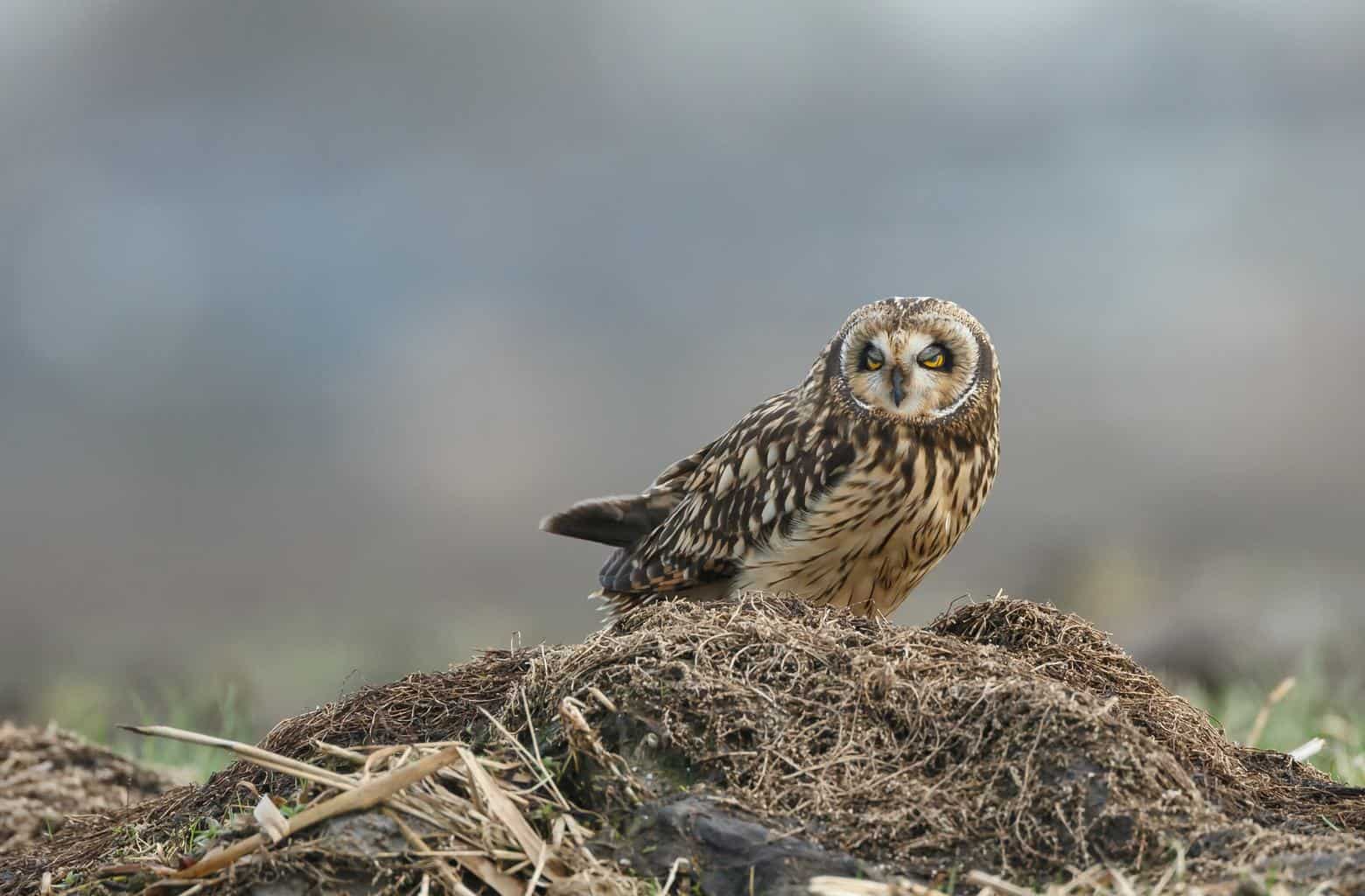
- Scientific Name: Asio flammeus
- Length: 13-17 inches
- Weight: 7.3-16.8 ounces
- Wingspan: 33.5-40.5 inches
The ears aren’t the only things that are short on short-eared owls; they also have short tails and feathers. Their faces are round and white, and their eyes are vibrant yellow, surrounded by a host of black feathers that look like lashes.
Short-eared owls are easy to identify because they have unique colorations, consisting of different shades of brown, spots of black here and there, and flecks of white feathers along their bodies.
These owls nest on the ground, which is a rare trait among owls. The only other species on this list that share this attribute is the burrowing owl. While nesting on the ground makes them more prone to attacks, these birds have a couple of tricks up their sleeves to protect them.
Short-eared owls are used to playing dead to trick any predator that’s watching it. Additionally, they hop on one leg to convince their prey that they’re disabled before attacking.
In Florida, you can find short-eared owls in meadows, prairies, and open fields, as they like to live anywhere with open spaces.
Burrowing Owl
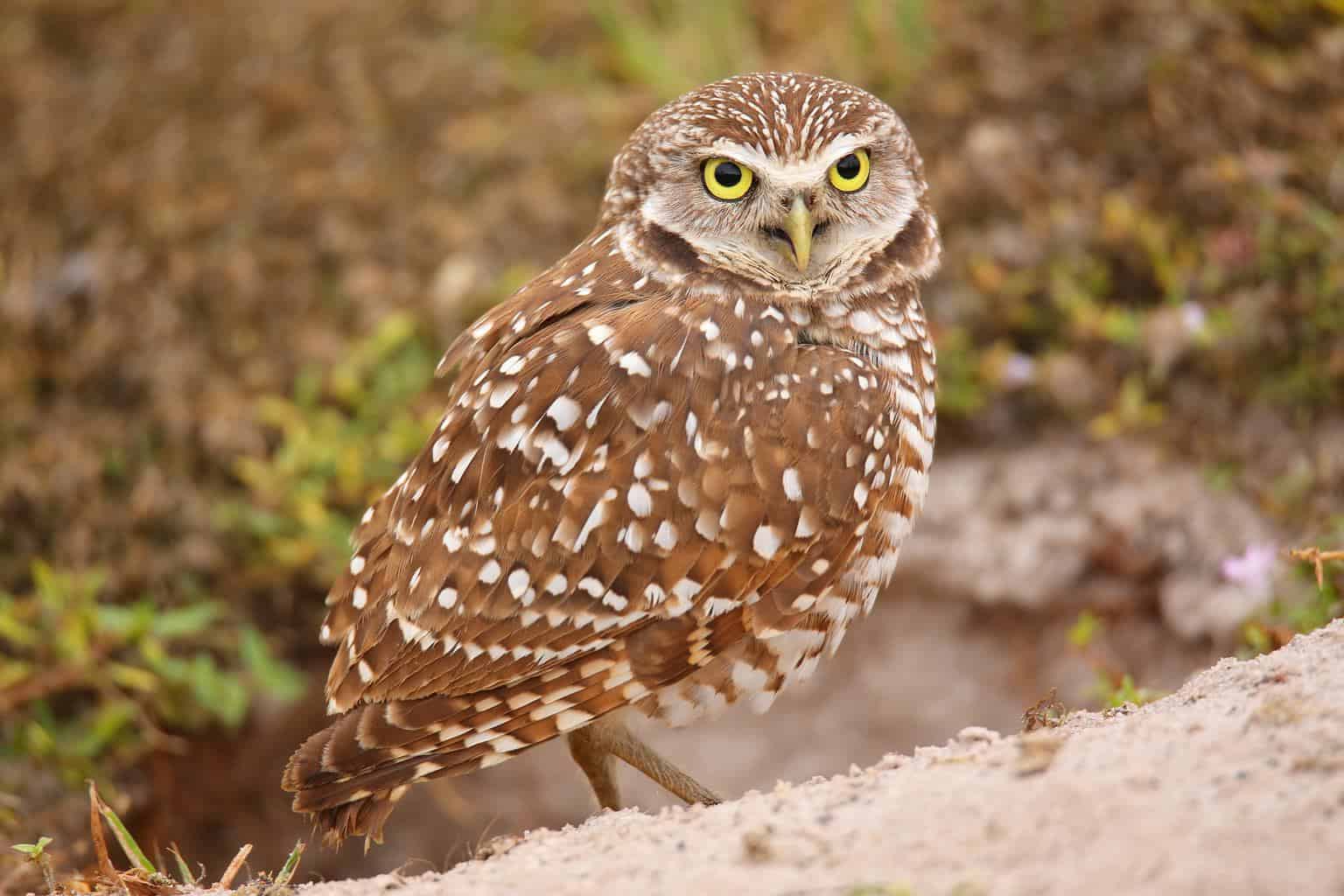
- Scientific Name: Athene cunicularia
- Length: 7.6-10 inches
- Weight: 5.3 ounces
- Wingspan: 21-21.5 inches
Have you ever heard of the famous novel featuring an owl, Hoot? The story is of a burrowing owl, and many people think the feature in the novel was the species’ claim to fame! Well…that, and the fact that the burrowing owl is an absolutely adorable bird.
These owls are relatively small, and they spend most of their time close to the ground, unlike most other owls. Some say they got their name from their habit of building their nests in hidden burrows in the ground.
Burrowing owls have long legs, and their faces are rounded and small, adorned by a pair of bright yellow eyes. Their owls are surrounded by grey feathers that look like eyelashes, and thanks to their brown and white hue and cute faces, these owls are among the most beautiful species of these birds.
You’ll find burrowing owls mostly around prairies in Florida, where they try to blend in with the surrounding vegetation. You have a high chance of seeing them during the day when they become active, and if you don’t find them, you can look for their burrows in the ground instead.
Eastern Screech-Owl
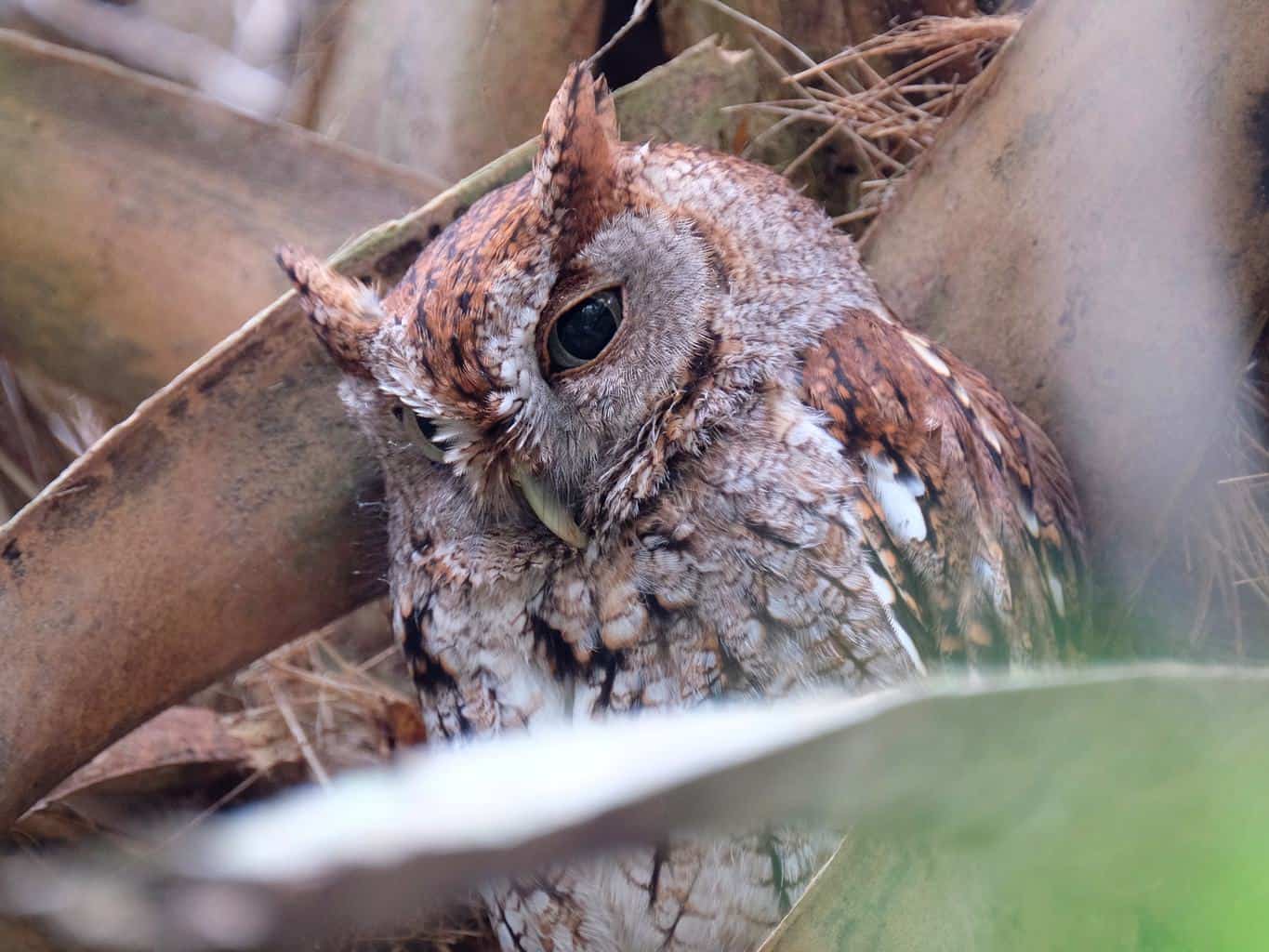
- Scientific Name: Megascops asio
- Length: 6.3-9.8 inches
- Weight: 4.2-8.6 ounces
- Wingspan: 18-24 inches
Eastern screech-owls are one of the most common species of owls in Florida. It’s small in size and adorable even though it looks like it has a permanent scowl on its face.
Its large yellow eyes define its face, and there are two tufts of feathers on the top of the bird’s head, making it look a bit like the great horned owl. When it comes to their living places, these screech-owls are highly versatile; they can live in plenty of open areas, including forests, swamps, suburban areas, and tree cavities.
These birds of prey spend the whole year in Florida, and they’re seen in large numbers in their breeding season between April and May.
Eastern screech-owls are nocturnal birds, meaning your chances of catching them during the day are close to none. They have a distinct call, though, a sound that starts quiet but eventually gets louder.
Barred Owl
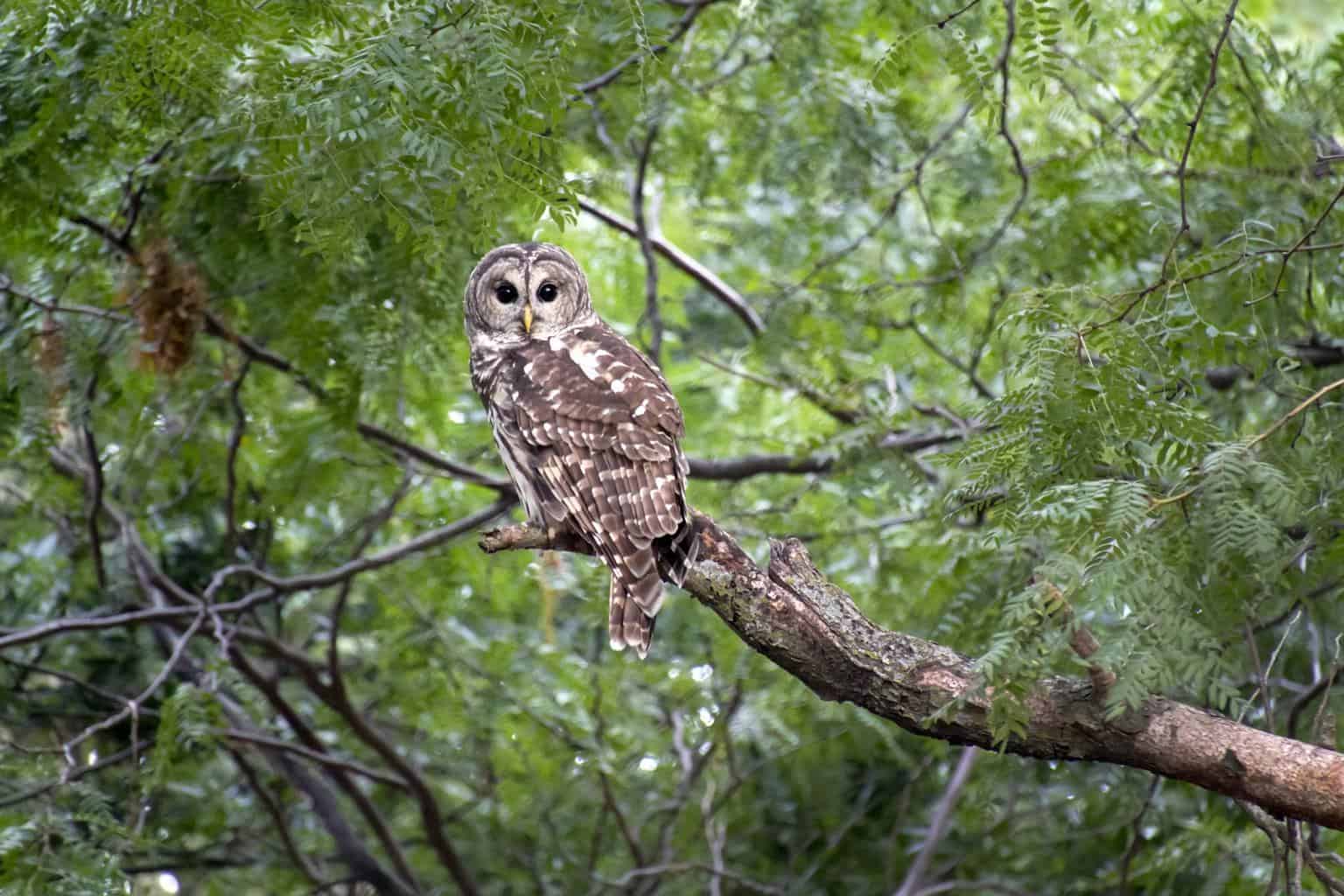
- Scientific Name: Strix varia
- Length: 16-25 inches
- Weight: 1-2.75 pounds
- Wingspan: 38-49 inches
The barred owl population is spread throughout Florida and the rest of the eastern United States as well as some parts of Canada. They’re pretty common in the Sunshine State, and your chances of seeing them are even higher during their breeding season. Barred owls start mating in February and continue breeding until August.
These owls are strictly nocturnal, rarely making appearances during the day. Besides, they mostly stay in mature forests around open areas. They’re one of the few species of birds that accepts nest boxes, though, so you can use those to lure a breeding pair.
Barred owls have a beautiful feather pattern, mostly brown with spots of white near the feathers’ tips. Their faces are rounded and kind of stocky, and their eyes are dark brown, but look as black as the darkest point of the night.
They’re known for camouflaging against tree trunks, and their unique patterns help them do it. If you notice an odd-looking part of a tree trunk, there’s a high chance it’s a barred owl in disguise.
Great Horned Owl
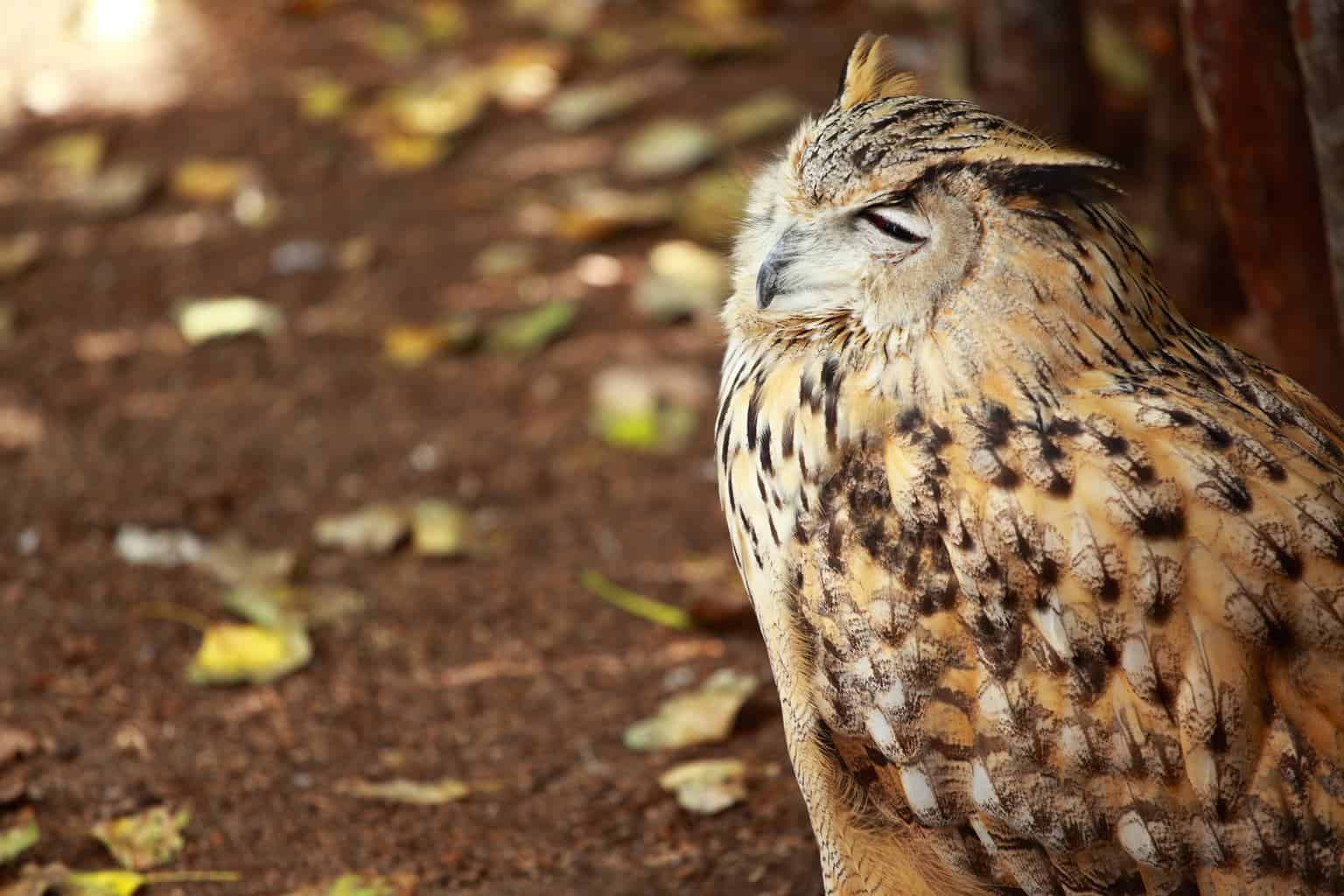
- Scientific Name: Bubo virgianus
- Length: 17-25 inches
- Weight: 2.5-4 pounds
- Wingspan: 36-60 inches
You probably saw Owl, the wise Winnie the Pooh character, at some point during your childhood, and if you didn’t already know, that character is a great horned owl.
Although we’re not sure birds of this species are as wise as Owl, we do know they’re massive and scary-looking. They have large ear tufts on their heads that look like horns, hence their name. Their faces are made up of different shades of grey, and their yellow eyes stick out in the dark against the mottled background.
As opposed to most of the owl species found in the United States, great horned owls love to be seen. These birds of prey have bold personalities, and they make their presence known. Although that’s bad news for their prey, it’s good news for you because it increases your chance of catching them.
You won’t have any trouble identifying great horned owls. They’re the largest species in the state, and their horn-like tufts make them stand out among the crowd. They’re nocturnal, but they sometimes hunt during the day, so you may come across them.
Snowy Owl

- Scientific Name: Bubo scandiacus
- Length: 20.7-25 inches
- Weight: 3.3-4 pounds
- Wingspan: 47-60 inches
Snowy owls are beautiful birds, and you’d be lucky to come across one of them. However, your chances of seeing them in Florida are unfortunately pretty slim. They’re rare in the state, and they don’t live there throughout the whole year.
They breed in Alaska, and sometimes they pass by new places on their way home, so some of them have been seen in Florida over the past few years.
Although we’ve all grown to love Hedwig, the snowy owl in the Harry Potter series, these owls aren’t as friendly as the fictional character. They’re known for their vicious actions toward their prey. They attack suddenly, ending their victim’s life in a few seconds with their sharp talons.
Beware: they’re known to attack humans, too, if they get too close to their nests. Not only that, but these owls were actually reported to have attacked larger animals, like arctic wolves!
Snowy owls mostly build their nests in high places to get away from predators. This also gives them a good opportunity to survey the area and catch their prey.
Final Thoughts
If you’re staying in Florida, you have a chance of coming across one of the species mentioned above, and you’ll see for yourself just how majestic an animal the owl really is. The notorious birds are found in abundance in the Sunshine State, and you may even see the same bird more than once if you’re staying for an entire season.
What’s important is staying a safe distance from these birds, as many of them are efficient hunters who can manage to put you in danger. Take your camera instead, and catch some beautiful photos of these owls. If you don’t want to miss out on any other Florida birds, check out a list of the woodpeckers in the state here!

